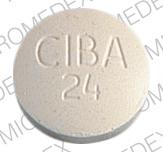Aminoglutethimide Disease Interactions
There are 3 disease interactions with aminoglutethimide.
Aminoglutethimide (applies to aminoglutethimide) adrenal insufficiency
Major Potential Hazard, High plausibility. Applicable conditions: Panhypopituitarism
Aminoglutethimide suppresses adrenal function and is indicated for the treatment of selected cases of Cushing's syndrome. It generally should not be used in patients with adrenocortical insufficiency.
Aminoglutethimide (applies to aminoglutethimide) hypotension
Moderate Potential Hazard, High plausibility.
Aminoglutethimide suppresses aldosterone production by the adrenal cortex, which may result in orthostatic or persistent hypotension. Therapy with aminoglutethimide should be administered cautiously in patients with or predisposed to hypotension. Blood pressure should be monitored at regular intervals, and patients should be advised not to rise abruptly from a sitting or recumbent position. Mineralocorticoid replacement therapy may be necessary.
Aminoglutethimide (applies to aminoglutethimide) liver disease
Moderate Potential Hazard, Moderate plausibility.
Aminoglutethimide is primarily metabolized by the liver. Therefore, the clearance and therapeutic activity of the drug may be altered in patients with hepatic impairment. In addition, aminoglutethimide may cause elevated levels of transaminases, alkaline phosphatase, and bilirubin. Therapy with aminoglutethimide should be administered cautiously in patients with compromised hepatic function. Liver function tests should be performed and monitored more closely during therapy.
Switch to professional interaction data
Aminoglutethimide drug interactions
There are 272 drug interactions with aminoglutethimide.
More about aminoglutethimide
- Check interactions
- Compare alternatives
- Side effects
- Dosage information
- During pregnancy
- Drug class: adrenal corticosteroid inhibitors
Related treatment guides
Drug Interaction Classification
| Highly clinically significant. Avoid combinations; the risk of the interaction outweighs the benefit. | |
| Moderately clinically significant. Usually avoid combinations; use it only under special circumstances. | |
| Minimally clinically significant. Minimize risk; assess risk and consider an alternative drug, take steps to circumvent the interaction risk and/or institute a monitoring plan. | |
| No interaction information available. |
See also:
Further information
Always consult your healthcare provider to ensure the information displayed on this page applies to your personal circumstances.


